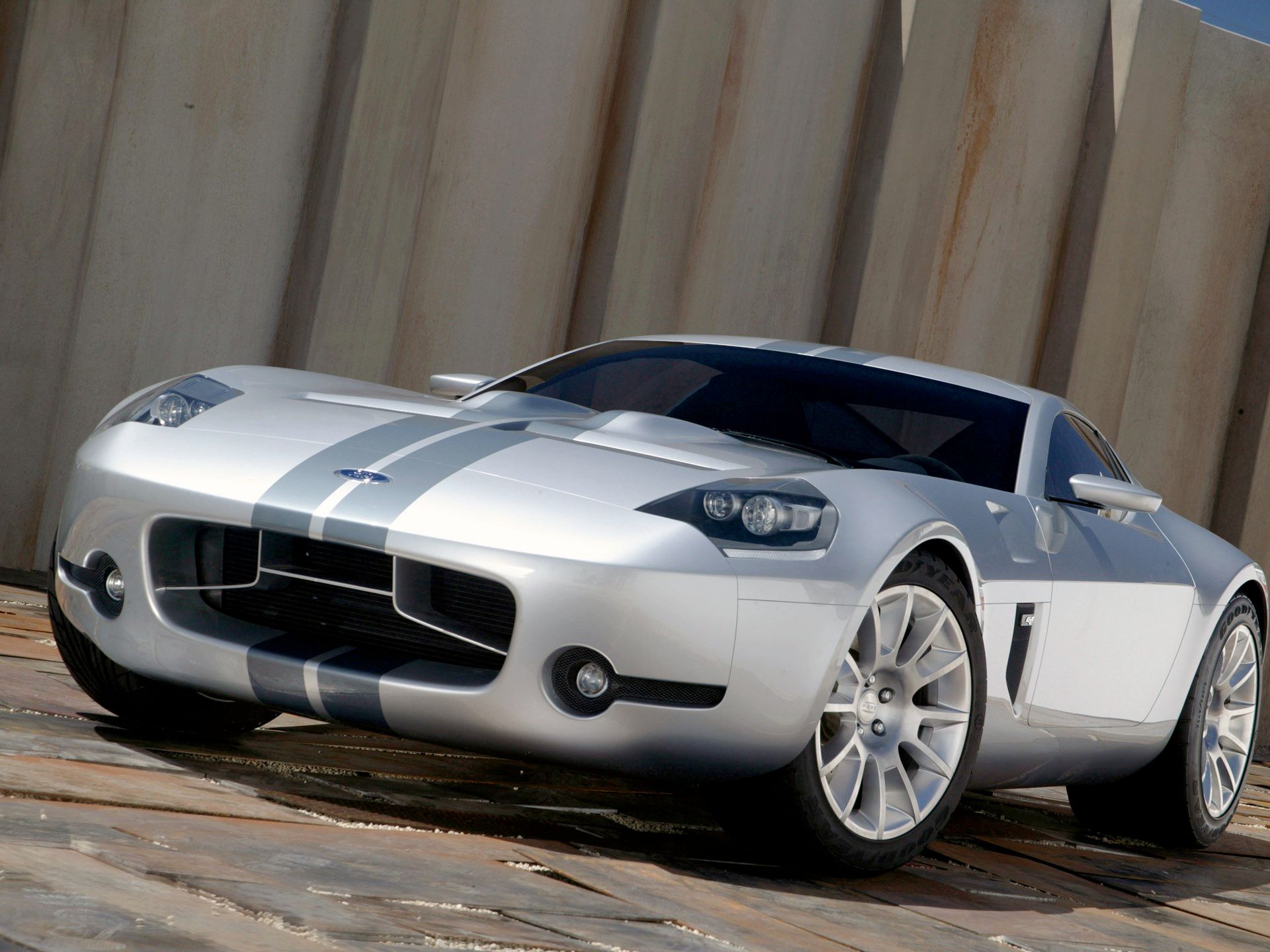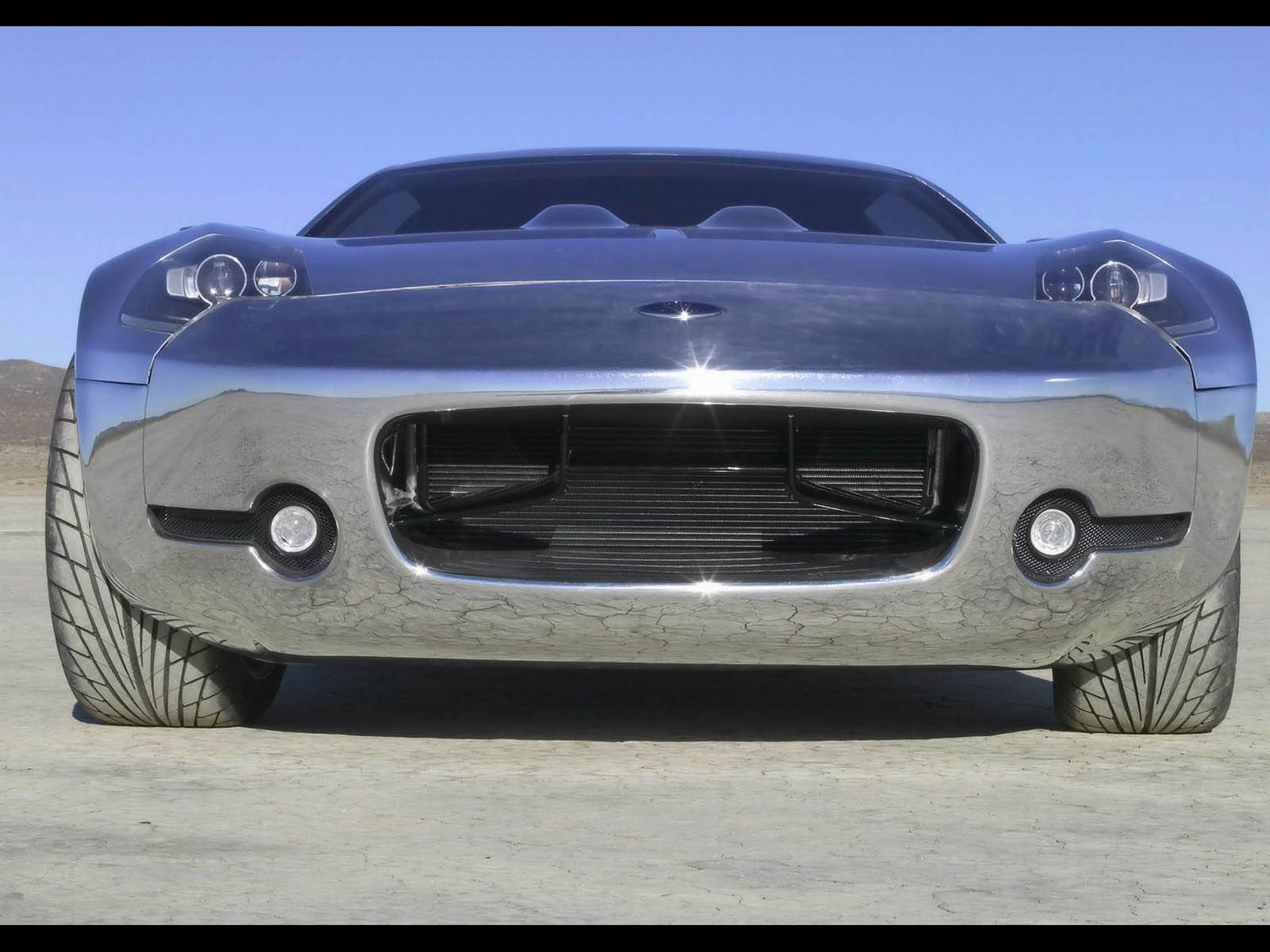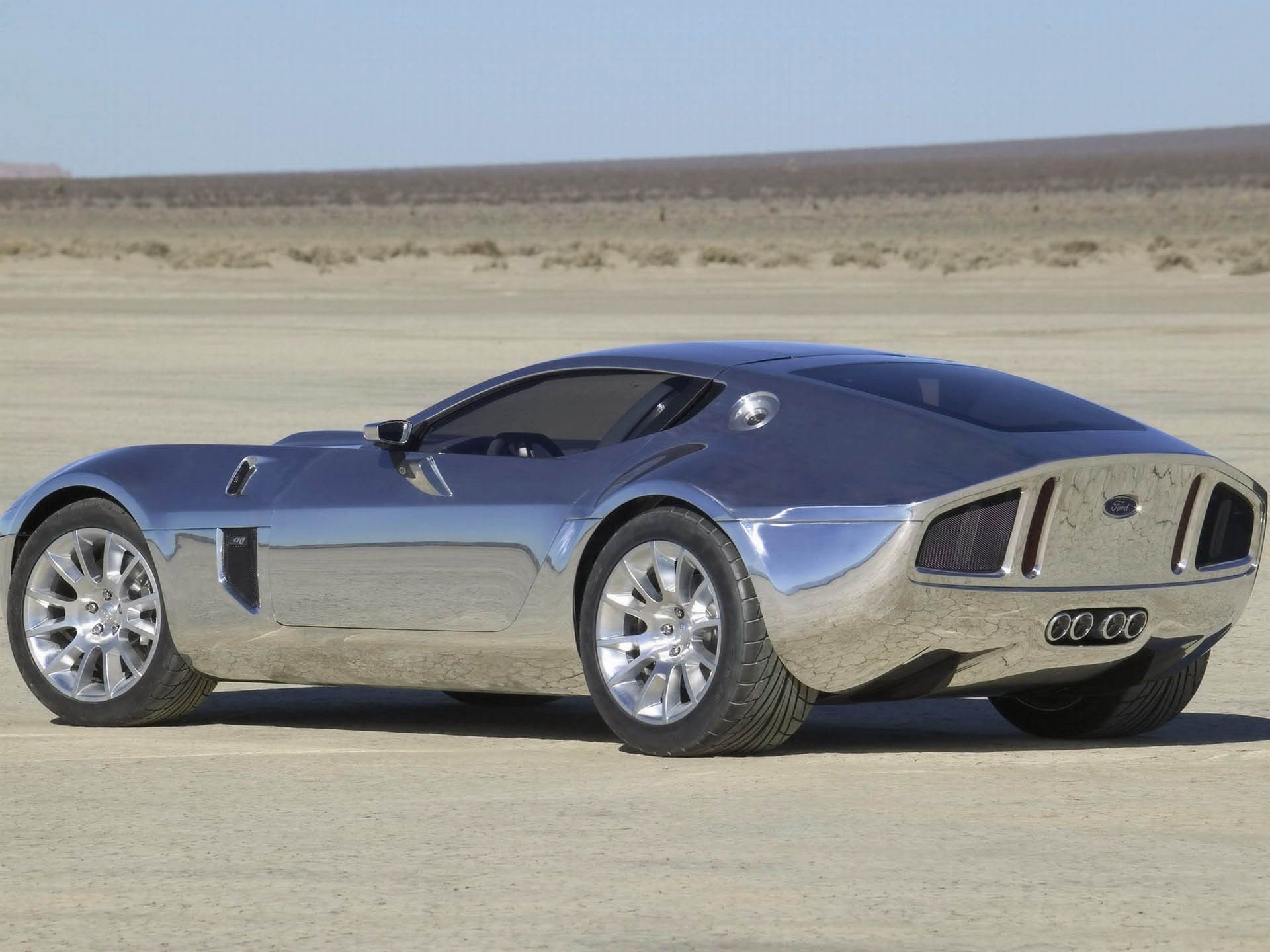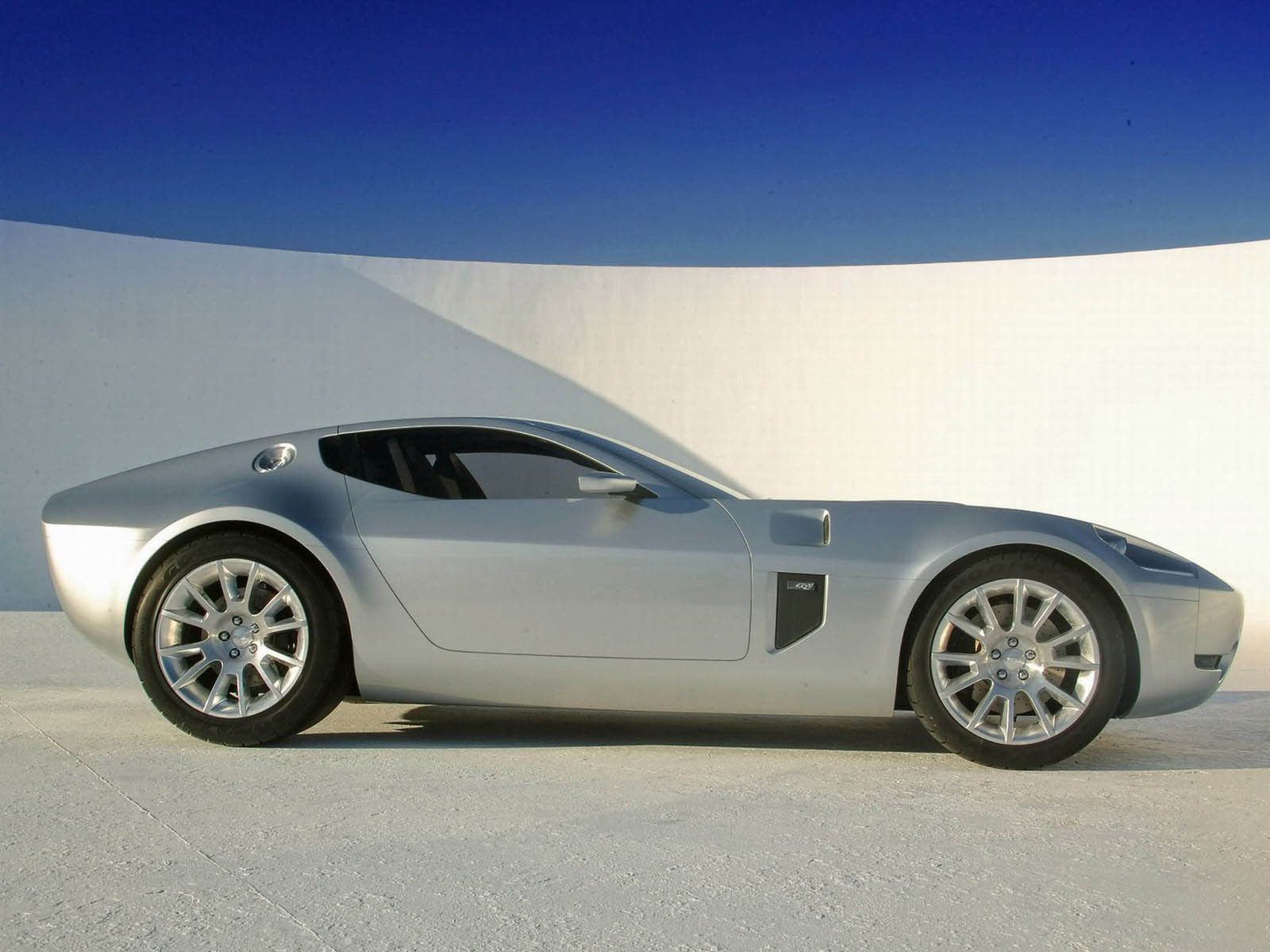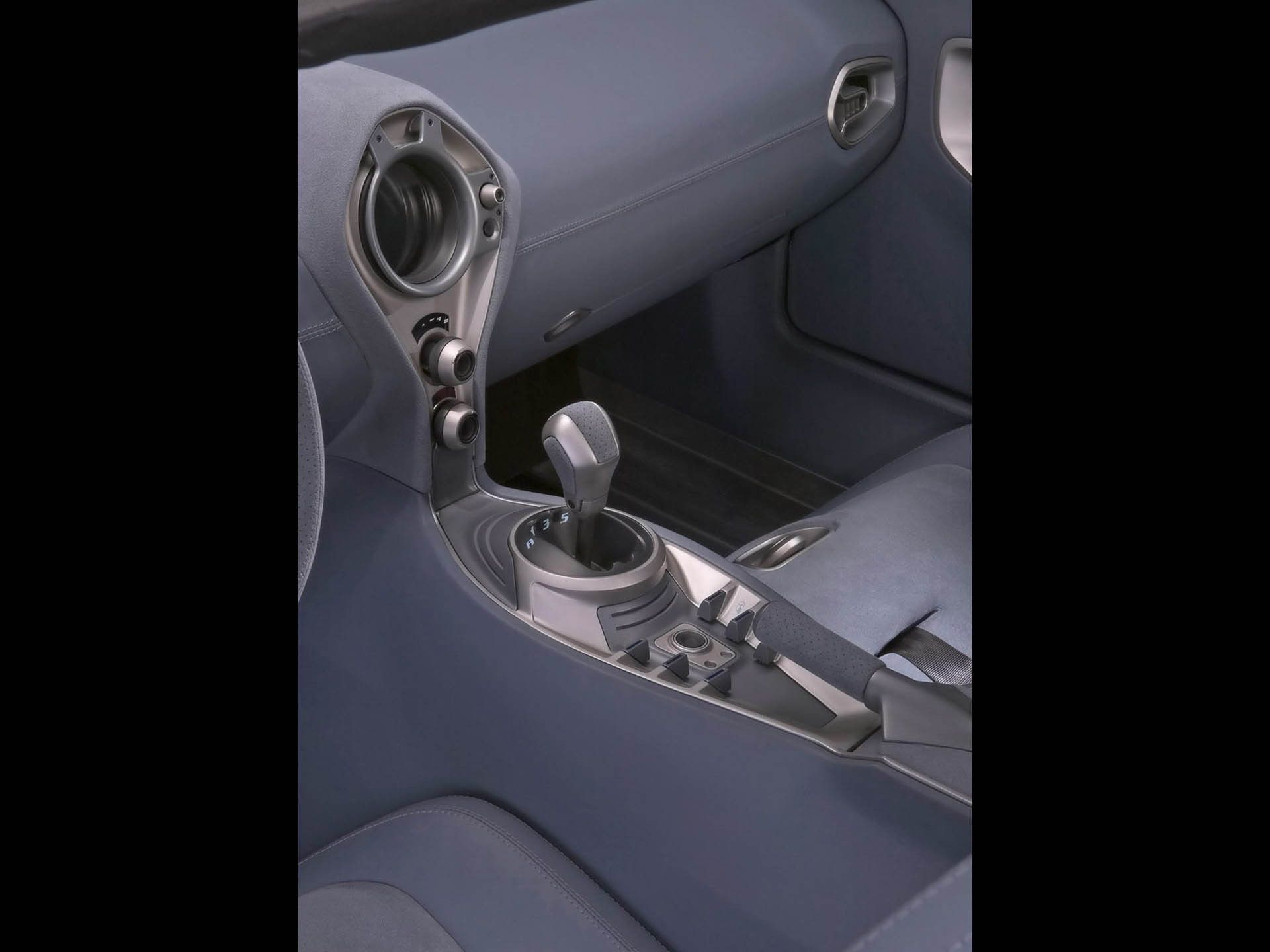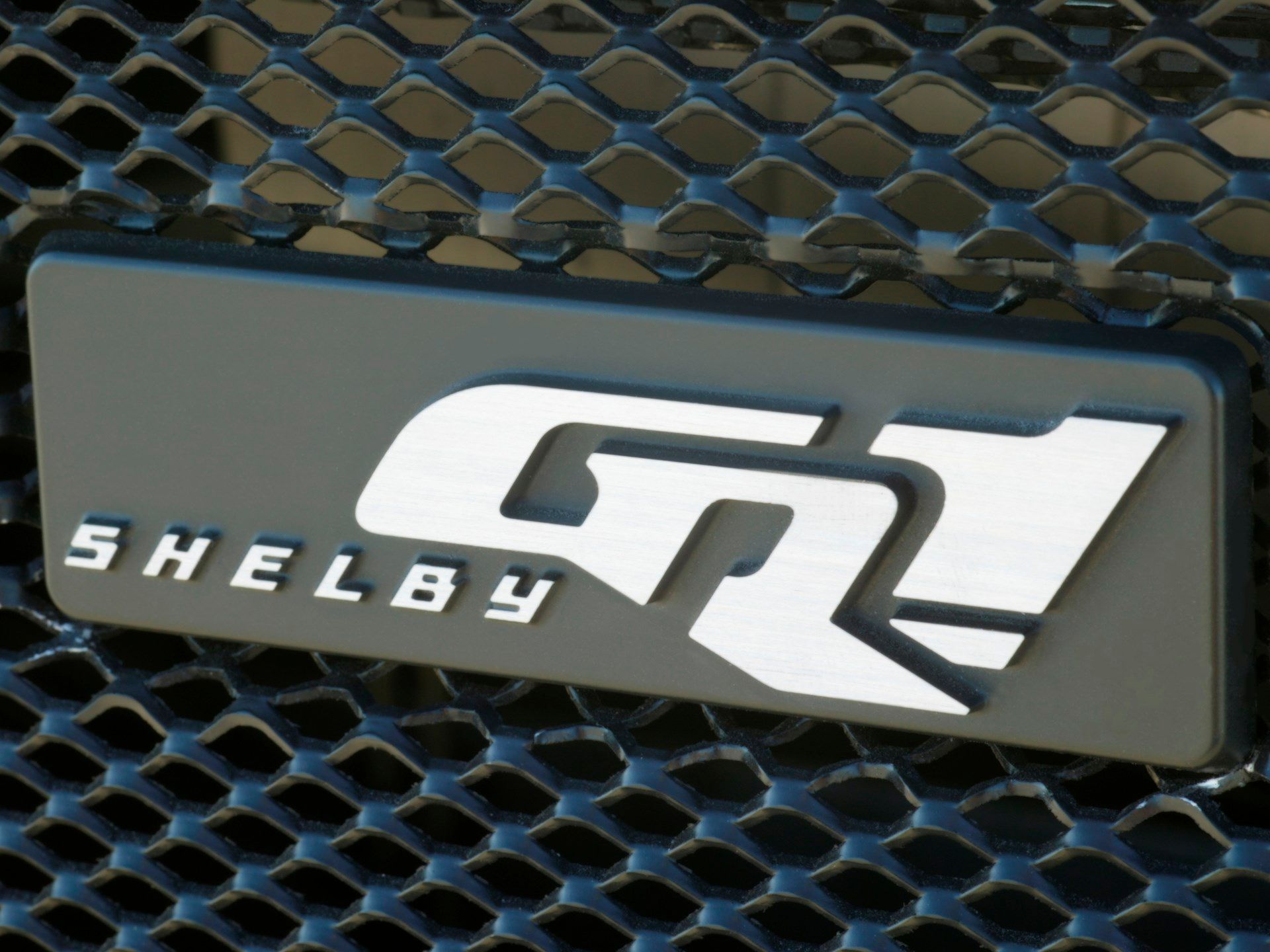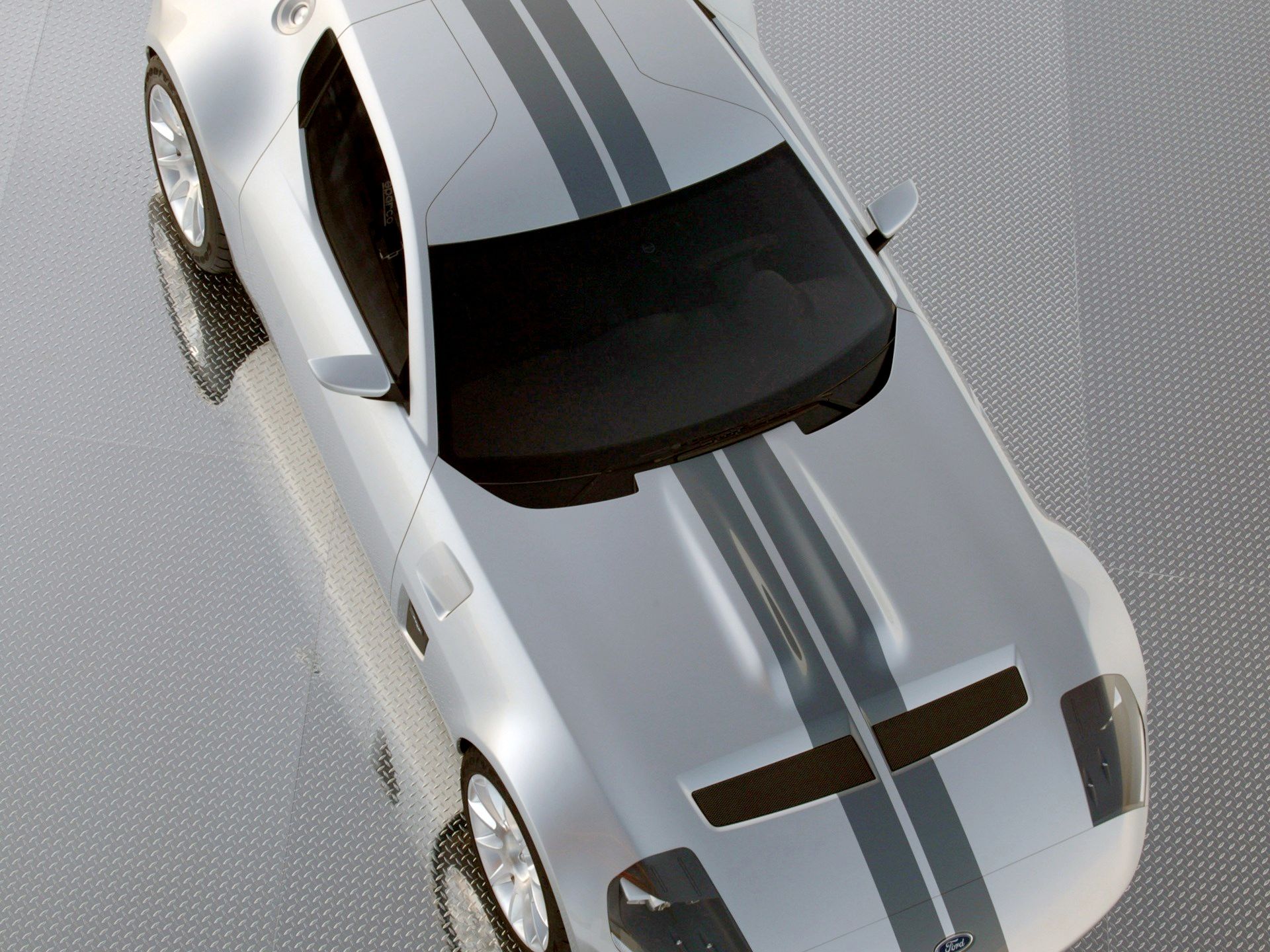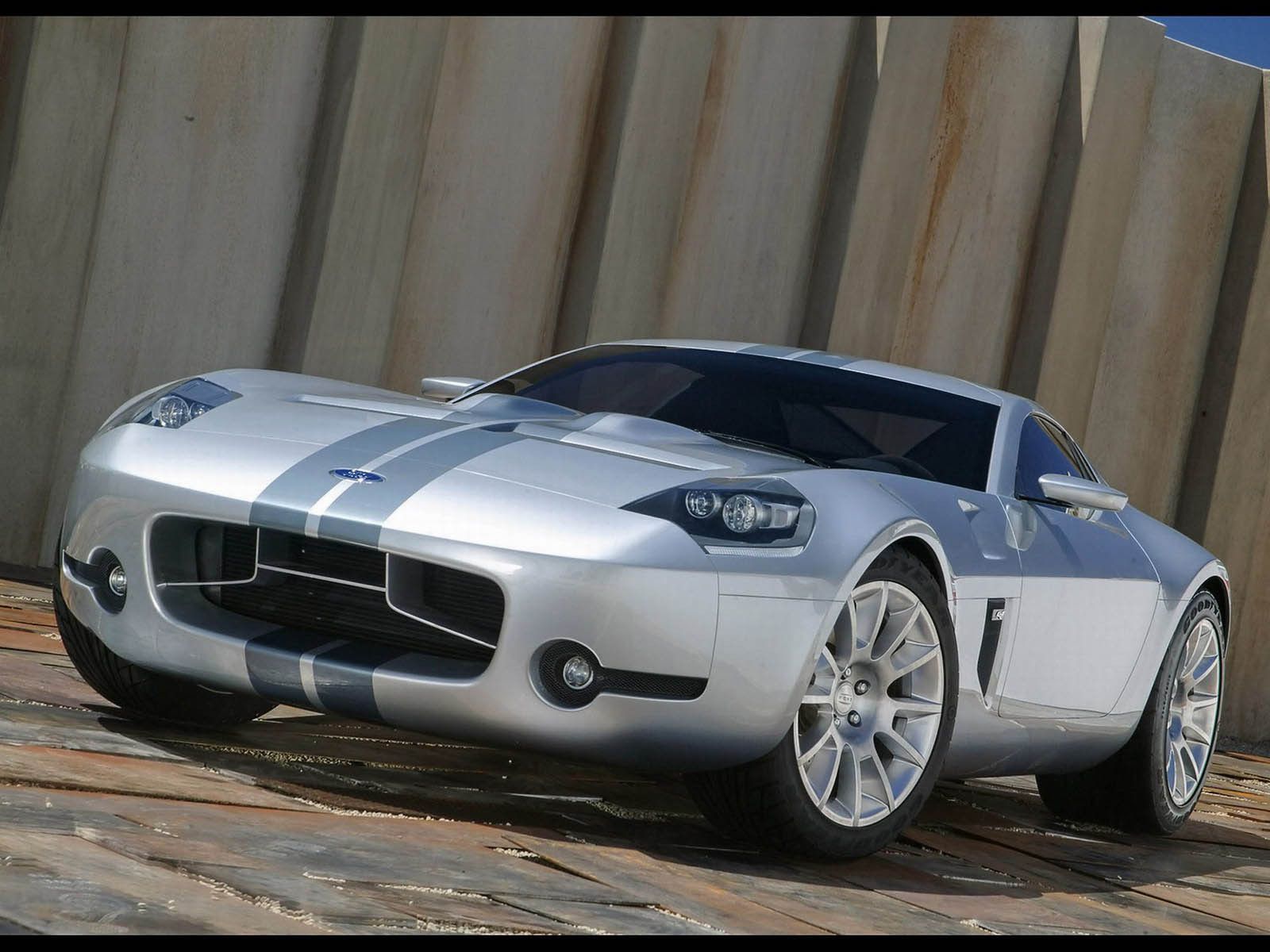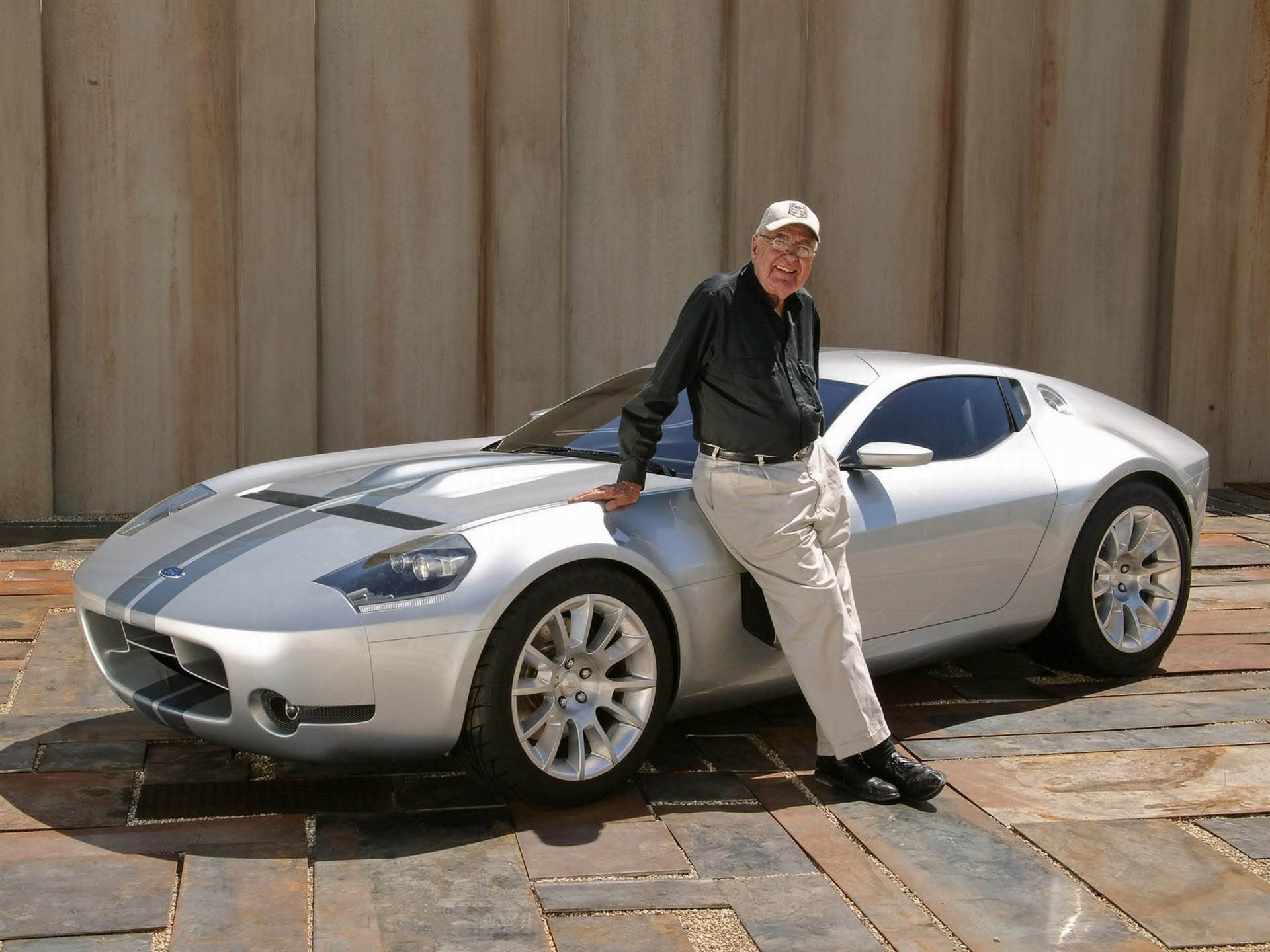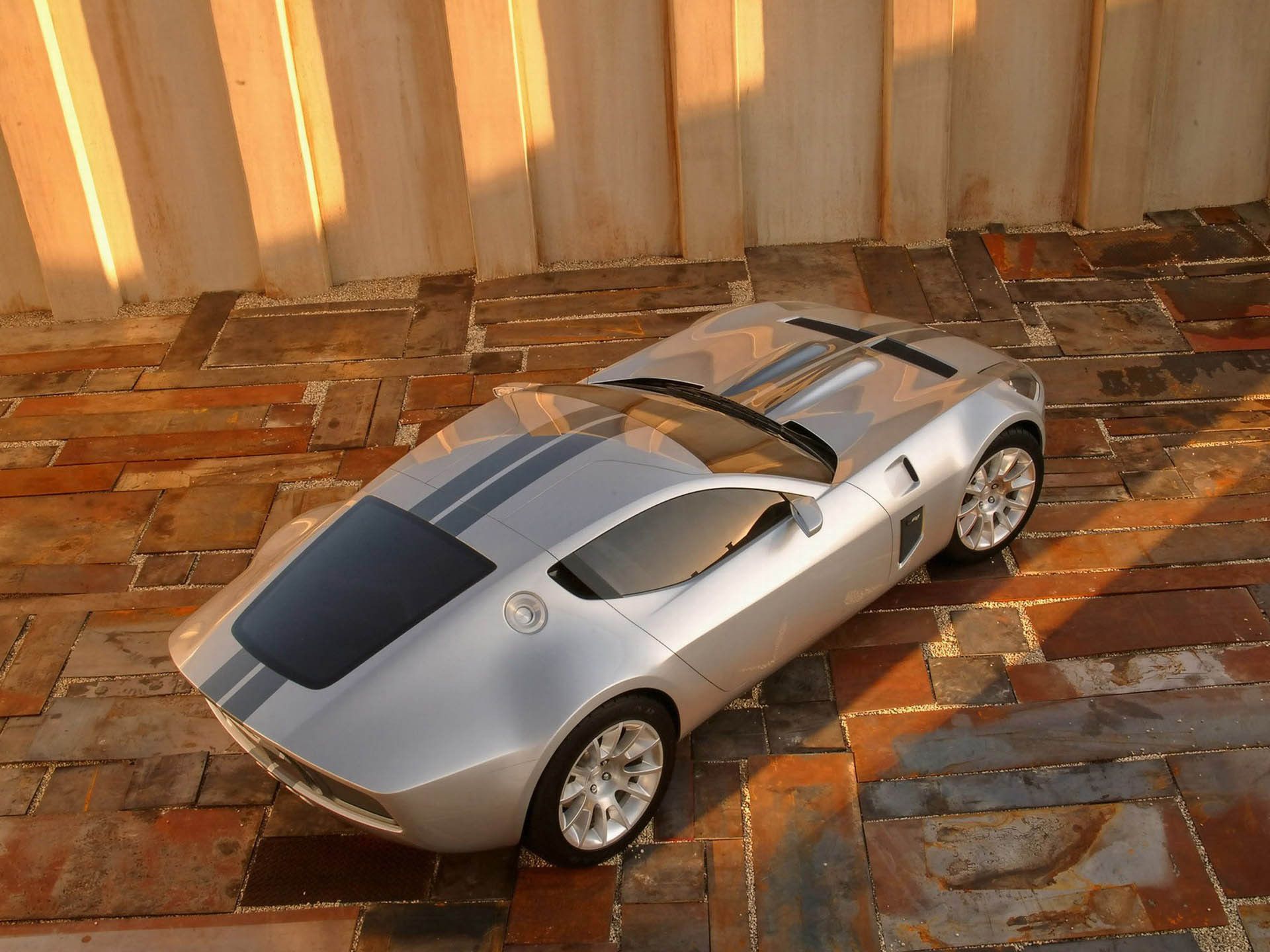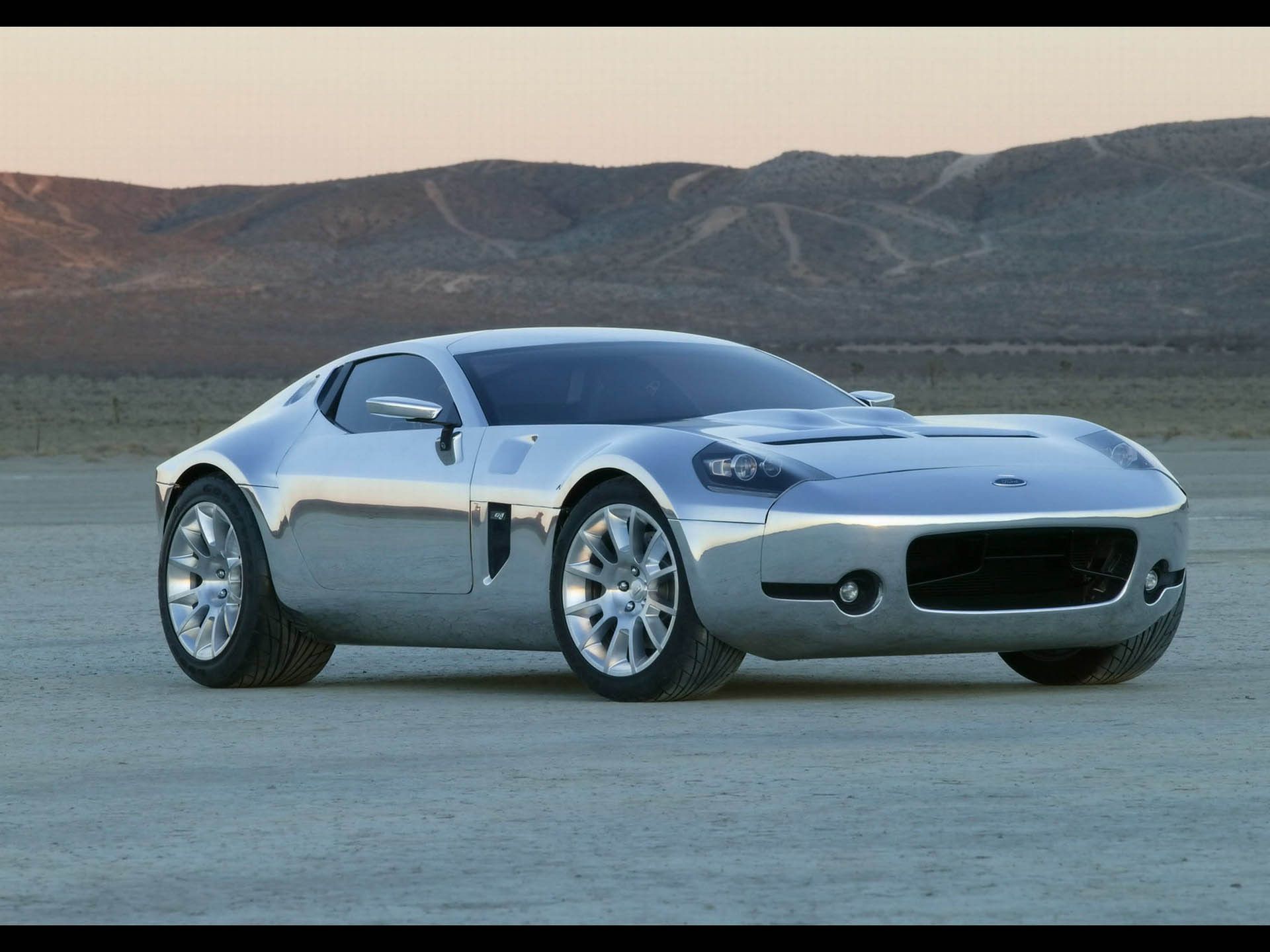How often do you get to read a title like that? How often does anybody revive a 15-year-old concept? Well, that's exactly what Superformance, licensed builders of Shelby reproductions for decades, are plotting to do with the stunning GR-1 concept car. It will be here in two year's time, with either an electric or gas-powered drivetrain, and it should deliver astonishing performance that includes a two-second sprint to 62 mph.
Now, I know you may be asking yourselves why we're reporting about what a tuner plans to debut two years from now. It's even fair to assume that all of this may be vaporware, but the guys at Superformance are as serious as it gets. It is, first and foremost, "a distributor of complete, rolling-chassis replica and continuation race cars of the 1960s" that's been in the business since 1996 and has received the blessing of both Ford and Shelby American to build a number of Shelby Cobra continuation models that are painstakingly accurate to the original.
The GR-1 Will Be Back, and An Electric Version Is On the Table Too
It's something truly rare to hear of a tuner, even one of Superformance's stature, gearing up to revive an old concept car that, while receiving rave reviews back in its day, was never meant for production. As a matter of fact, the GR-1 was created as a throwback tribute to the Shelby Cobra Daytona Coupe, the world championship-winning machine from 1965.
Originally, the GR-1, a project conceived by Ford's Advanced Product Creation under the leadership of Manfred Rumpel, was unveiled in clay form at the 2004 Pebble Beach Concurs d'Elegance. Then, it was finally presented as a fully-working machine at the 2005 North-American International Auto Show. It had a polished aluminum bodywork that later went hidden under a layer of silver paint, and a 6.4-liter naturally-aspirated V-10 engine under the hood. It was a different engine to the modular V-8 seen in the Ford GT and was rated at 605 horsepower and 501 pound-feet of torque.
Ford brought the GR-1 to a number of auto shows in the following years, but they were adamant that the GR-1 was just a concept car, not something they're considering even for a limited run of production models. After all, they said, it was just something they put together to mark the 40th anniversary of the Cobra's winning season when they romped away with the title with driver Ken Miles to the dismay of Ferrari.
Now, though, the GR-1 is coming back as a fully-licensed replica that's bound to be quicker than the original was said to be at the time. According to Superformance's CEO, Lance Stander, the company's been poking Ford with a stick and asking them about the GR-1 for years. "We originally said we want to do the GR-1, and we spoke to everyone at Ford, and they said it's never going to happen. Just forget about it."
"We could have done a replica, we could have done a kit car, but that was never good enough for us. We had to get licensed by the original manufacturer, and it had to have all credibility," added Stander, quoted by Road & Track. It took some more "plodding" before some people from Ford Design back in Europe found out about Superformance's initiative and were really keen to help make it a reality. Now, Superformance has joined forces with Shelby American to make it happen. Its Vice-President, Vince Laviolette, said simply "it's gonna be very fast" when Stander announced the project on January 6 at the Petersen Automotive Museum during a Shelby Tribute event.
Road & Track points out that the timeline for the new replica has a lot to do with the 2015 Low Volume Motor Vehicle Manufacturers Act as only 200 GR-1s will be built. Currently, the bill must be finalized which may take a while longer with the current government shutdown ongoing. Still, the car won't be ready before 2021 when an electric version will also be available besides the gas-powered one.
The GR-1 Has An Illustrious Forefather
Shelby was successful almost right off the bat with its AC Ace-based sports car, the Cobra. While it first sported the small 4.3-liter V-8 engine, the Cobra offered buckets of torque, more than even the Bristol-sourced engine that AC stuck in the Ace, and also handled quite well. However, its major drawback was the fact that it was a roadster.
Realizing the shortcomings of the roadster, the two 'Le Mans' Cobras that were sent to Le Mans in 1963, by now equipped with the FIA-approved 4.7-liter V-8, featured a removable hardtop that extended towards the back thanks to a shorter, bottom-hinged trunk lid. What is more, these cars received larger 140-liter fuel tanks, larger wings with spats to cover the fat tires, as well as bigger vents, a hood scoop while the V-8 was fed by four Weber DC48IDM carburetors. All these modifications - 40, in total - didn't help much as the 250 GTO, Ferrari's 3.0-liter V-12 beauty, was faster with a top speed of 185 mph. Still, they went faster than the roadster versions that couldn't surpass 160 mph at the time.
With these lessons in the bag, Shelby concluded that something faster was needed for 1964, something that could take the battle to Ferrari anywhere, not only on American tracks such as Bridgehampton where Dan Gurney scored Shelby American's first FIA World Manufacturer's Championship race win in September of '63. He did it, funny enough, with #CSX2137, the third 'Le Mans' Cobra that never got to Le Mans due to Shelby's reluctance to involve officially in the race.
That's where Pete Brock, who'd previously helped design the Chevrolet Corvette Sting-Ray Racer, appears in the story. He was of the opinion that a brand-new car had to be built if Shelby was to have any chance against Ferrari in 1964. This car went on to become the Cobra Daytona Coupe, and it encompassed, according to Brock himself, the findings of a number of German engineers from the World War II era that had studied aerodynamics. One of them, Wunibald Kamm, developed the 'Kamm-tail' design that was basically a cut teardrop in appearance as he'd found out that abruptly cutting off the tail resulted in a minimal increase in drag and it also helped achieve a compact size for the car.
Initially, Shelby's men were reluctant to follow Brock's lead as the Coupe body sketched by Bruck was a completely different kettle of fish compared to the Cobra Roadster that had, undeniably, enjoyed a dominant season in 1963. Still, Brock had mechanic John Olsen of New Zealand, and Ken Miles, one of Shelby's top drivers, on his side and work began in late '63. By late January, the first prototype was ready and, on February 1st, 1964, 90 days after that first sketched had been laid on paper, the car was running at Riverside Raceway in California. Right out of the box, the Daytona was able to pull about 185 mph down the big straight at Riverside, already surpassing the 250 GTO in its 1962/63 specification.
The car debuted at the Daytona 2000-kilometer race on February 16th, 1964.
Next up, at Sebring, Dave McDonald and Bob Holbert teamed up again to drive #CSX2287. They qualified 6th overall, nine seconds quicker than the fastest 250 GTO/64. However, the Ferraris ran in the GT 3.0-liter division while the Cobra Coupe was entered in the GT 5.0-liter category due to its bigger engine displacement. Regardless, McDonald and Holbert romped away and won the class by finishing fourth overall. As a footnote, the fixed-head Cobra proved quicker than the fastest of the Corvette Grand Sports by a second as well.
Sure enough, come race proper, the GT40 was far from ready while the Daytona shone through. That's also because, at the time, the GT40 was being developed by Ford Advanced Vehicles across the pond in the U.K., so it was all before Shelby took over the project in '65. The GT40 had only done one race weekend by the time it returned to Le Mans, and that was the daunting Nurburgring 1000-kilometer race. It's interesting how to of sportscar racing's biggest automotive stars, the GT40 and the Porsche 917, both debuted on the world's longest and, arguably, trickiest permanent road course. And they both faired rather poorly although the GT40 didn't even reach the chequered flag after qualifying second overall, eight seconds behind John Surtees in his Ferrari 275P.
At Le Mans, both GT40s retired due to the troublesome Colotti gearbox while the Cobra Daytona Coupe came home fourth overall, winning in its class. It went on to win the RAC Tourist Trophy that year too, but Shelby didn't walk away with the GT title after the season-ending round at Monza, near Milan, got canceled. Some say that The Drake pulled some strings to have the Italian organizers abandon the race for fear of Shelby beating him with the quicker Daytona Coupe.
Nevertheless, 1965 was the golden year of this car and of Bob Bondurant. The American became world champion as Ferrari stopped developing a replacement for the 250 GTO.
After retirement, all six Cobra Daytona Coupes became highly desirable. The prototype, currently owned by the Simeone Museum, set a few land speed records at the Bonneville Salt Flats in '66 and is a historically-significant vehicle as attested by the HVA.
Will We See the Cobra Concept in Production Too?
It even had a modified version of the GT's chassis, made to work with the front-mounted engine. The suspension layout was also similar and the mounting brackets for the transmission. The car's naturally bigger than the original '60s Cobra Roadster and also heavier tipping the scales at 3,075 pounds.
That V-10 I mentioned developed over 630 horsepower at the crank at 6,750 rpm and 501 pound-feet of torque at 5,500 rpm. Due to the fact that it's a roadster, Ford implemented an electronic limiter that stops the speed from climbing at 180 mph. However, theoretically, the car could exceed 205 mph.
Last year, we heard that Chris Theodore, the chief engineer of this car, bought it at the GAA charity auction for $825,000. While the man wants to make the prototype road-worthy, there aren't plans for it to go into any sort of production. With that being said, Ford considered it "production feasible" back in '04 so let's hope Superformance's next project after the GR-1 replica is this thing.
If that will, indeed, be the case, it won't be the first 'modern' Shelby to hit the road. That honor is bestowed upon the largely-forgotten - for better or for worse - Shelby Series 1. Designed by Carroll Shelby himself, the Series 1 was built in limited numbers back in 1998. In fact, only 249 units are said to have left the factory.
There were also a few other Shelby Series I models built in 2005 after Venture Corporation, the company that had purchased Shelby American back in 1999, went bankrupt and Carroll was able to regain possession of all the assets. These examples, though, were built as 'component cars' as Shelby Automotive couldn't re-certify the car under the latest regulations.
Finally, the Series II model deserves a mention. Tough emission and safety standards rendered the project too expensive to complete, although $5 million were injected at the time in three running prototypes and respective tooling. Then, 12 years later, it all got going again, and the car debuted back in May of 2018 with help from Wingard Motorsports.
Here's hope that the GR-1 replica won't be hit by lazy lawmakers and that it will see the light of day with its don't-look-at-me polished aluminum bodywork!
Further reading
Read our full review on the 2017 Ford GT.
Read our full review on the 2005 Ford Shelby GR-1.
Read our full review on the 1964 - 1965 Shelby Daytona Coupe.
Read our full review on the 1998 Shelby Series 1.
The Shelby Series 2 Makes its European Debut in Paris

